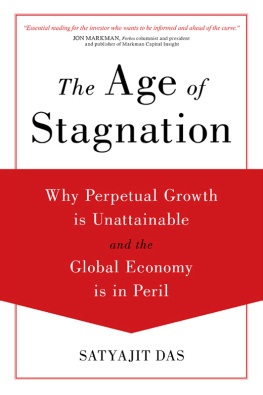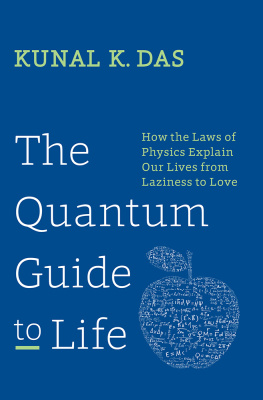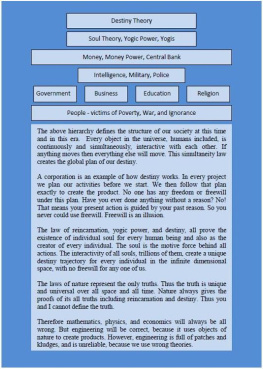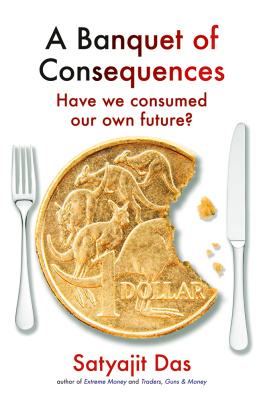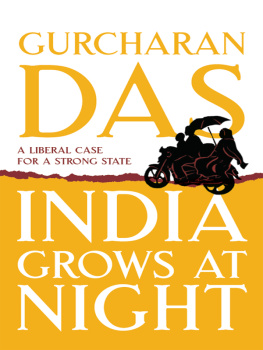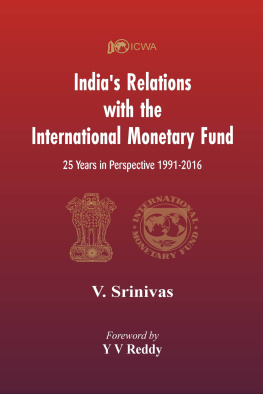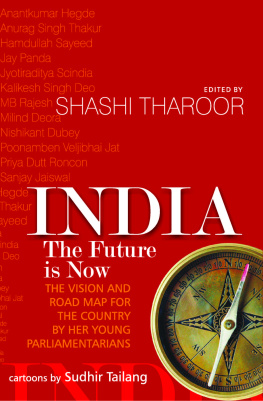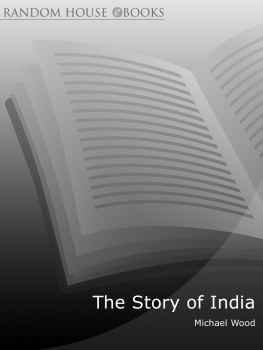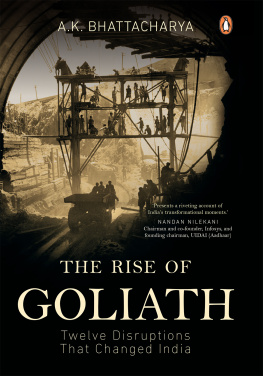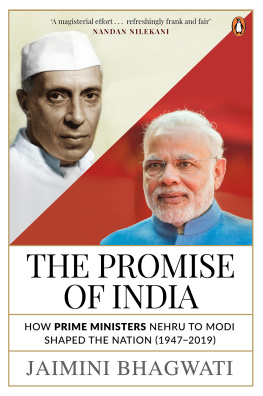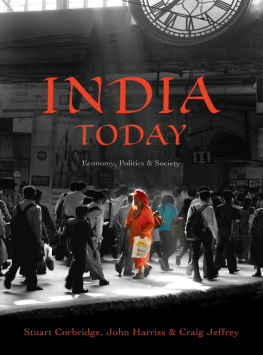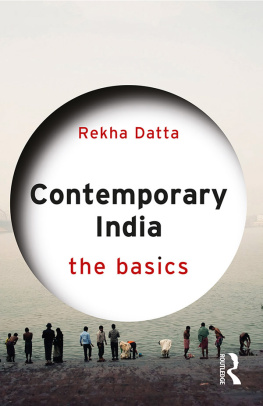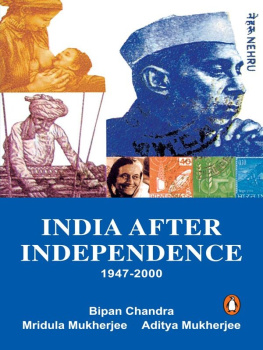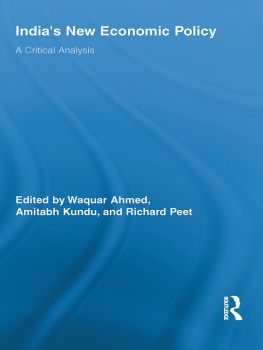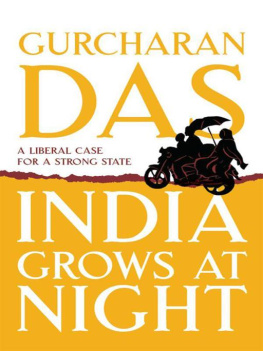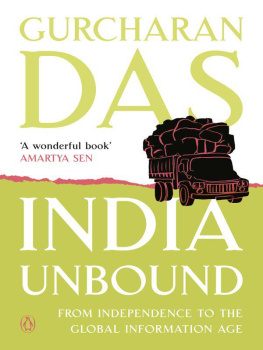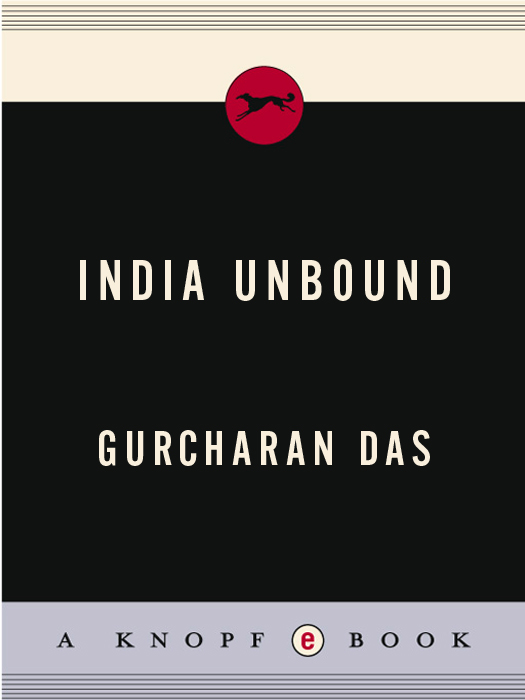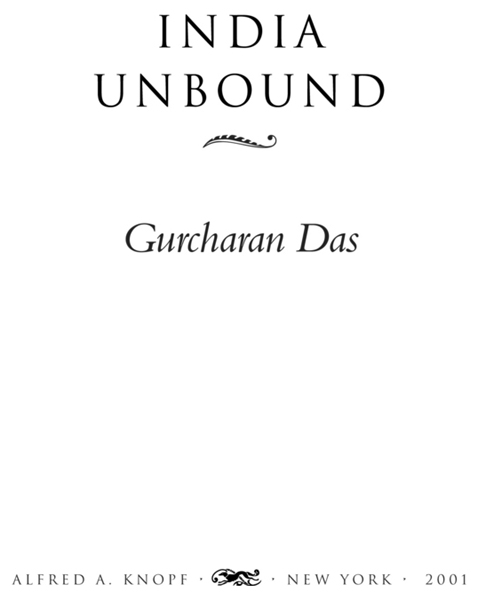ALSO BY GURCHARAN DAS
NOVEL
A Fine Family (1990)
PLAYS
Larins Sahib: A Play in Three Acts (1970)
Mira: Rito de Krishna, translated by Enrique Hett (1971)
9 Jakhoo Hill (1973)
Three Plays (2001)
THIS IS A BORZOI BOOK PUBLISHED BY ALFRED A. KNOPF
Copyright 2000 by Gurcharan Das
All rights reserved under International and Pan-American Copyright Conventions. Published in the United States by Alfred A. Knopf, a division of Random House, Inc., New York, and in Canada by Random House of Canada Limited, Toronto. Distributed by Random House, Inc., New York.
Originally published in India by Viking, Penguin Books India, New Delhi, in 2000.
www.aaknopf.com
Knopf, Borzoi Books, and the colophon are registered trademarks of Random House, Inc.
eISBN: 978-0-375-41344-5
Library of Congress Number: 00-119437
v3.1
For Bunu, Kim, and Puru
CONTENTS
INTRODUCTION:
THE WISE ELEPHANT
the causes of wealth and poverty of nationsthe grand object of all enquiries in Political Economy.
MALTHUS TO RICARDO ,
LETTER DATED 26 JANUARY 1817
T he ascent of a country from poverty to prosperity, from tradition to modernity, is a great and fascinating enterprise. India has recently emerged as a vibrant free-market democracy after the economic reforms in 1991, and it has begun to flex its muscles in the global information economy. The old centralized bureaucratic state, which killed our industrial revolution at birth, has begun a subtle but definite decline. With the rule of democracy the lower castes have gradually risen. This economic and social transformation is one of the themes of this book. The struggle of one-sixth of humanity for dignity and prosperity seems to me a drama of the highest order and of great consequence for the future of the world. It has meaning for all of humanity and sheds new light on the future of liberalism in the world.
The story I will be telling is soft drama. It is taking place quietly and profoundly in the heart of Indian society. It unfolds every day, in small increments barely visible to the naked eye, and is more difficult to grasp than hard drama, which is more dramatic and captures the headlines. Most people instinctively grasp the spirituality and poverty of India. But the significance of this quiet social and economic revolution eludes them. The change is partially based on the rise of social democracy, but more importantly on the sustained 5 to 7 percent annual economic growth that India has experienced for the past two decades, which has tripled the size of the middle class. Although the middle class is still only 18 percent of Indias one billion population, it is expected to become 50 percent within a generation. In the end, this silent revolution is more significant historically than the constantly changing fortunes of political leaders and parties which so absorb Indians.
I have followed, I find, the method of Defoes Memoirs of a Cavalier, in which the author hangs the chronicle of great political and social events upon the thread of an individuals personal experience. However, this is not autobiography. I have decided to tell the story in the first person because I believe that one persons experience, honestly captured, even on the sidelines, not only is unique but is the only certain data of history that we possess as human beings. I did not, besides, wish this account of national competitiveness to be dry and didactic; I wished to breathe life into the clash of economic and social ideas.
When I was young, we passionately believed in Jawaharlal Nehrus dream of a modern and just India. But as the years went by we discovered that Nehrus economic path was taking us to a dead end, and the dream soured. Having set out to create socialism, we found that we had instead created statism. As a practicing manager in the 1960s I found myself caught in the thick jungle of Kafkaesque bureaucratic controls. Our sense of disillusionment reached its peak during Mrs. Gandhis autocratic rule in the seventies. There was a glimmer of hope when Rajiv Gandhi became Prime Minister, but it quickly died when we discovered that he did not have what it takes. It was not until July 1991 that our mood of despair finally lifted, with the announcement of sweeping liberalization by the minority government of P. V. Narasimha Rao. It opened the economy to foreign investment and trade; it dismantled import controls, lowered customs duties, and devalued the currency; it virtually abolished licensing controls on private investment, dropped tax rates, and broke public sector monopolies. As a result, growth picked up to 7.5 percent a year in the mid-nineties, inflation came down from 13 percent to 6 percent by 1993, exchange reserves shot up from $1 billion to $20 billion. As India joined the world economy we felt as though our second independence had arrived: we were going to be free from a rapacious and domineering state.
Although the reforms after 1991 have been slow, hesitant, and incomplete, they have set in motion a process of profound change in Indian society. It is as important a turning point as Dengs revolution in China in December 1978. A half century of the ballot box has also empowered the lower castes, and this means that the fruits of the reforms are likely to be better distributed. The world has, meanwhile, changed from an industrial to an information economy, and it speaks to Indias advantageour initial success in software is the first evidence. The irony is that most Indians, especially in the political class, have not yet realized it. If they had, they would invest more in education and implement the reforms much faster.
One of the intriguing questions of history is why we failed to create an industrial revolution in India. Marx predicted that the railways would transform India and usher in an industrial revolution. Indeed, by the First World War, some thought that we were ready to take off. By 1914, India had the third-largest railway network, the worlds largest jute manufacturing industry, the fourth-largest cotton textile industry, the largest canal system, and 2.5 percent of world trade. It also had a merchant class hungry to become industrialists. After the war, industrialization did, in fact, pick up. G. D. Birla, Kasturbhai Lalbhai, and other businessmen made huge trading profits during the First World War and reinvested them in setting up industries. Between 1913 and 1938, our manufacturing output grew 5.6 percent a year, well ahead of the world average of 3.3. By 1947, industrys share doubled to 7.5 percent of national output from 3.4 percent. But it was not enough to broadly transform our agricultural society. Modern industry employed only 2.5 million people out of a population of 350 million. The chief problem was our agriculture, which remained stagnant, and you cannot have an industrial revolution without an agricultural surplus or the means to feed a rapidly growing urban population.
After we won freedom, Jawaharlal Nehru and his planners attempted an industrial revolution through the agency of the state. They did not trust private entrepreneurs, so they made the state the entrepreneur. Not surprisingly, they failed, and India is still paying a huge price for their follies. Instead, we experienced an agricultural revolution. Ironically, we now had an important precondition in placean agricultural surplusbut the industrial revolution continues to elude us.


